One of the best ways to reach your customers is to start a blog. In fact, it doesn’t matter if you’re a solopreneur, freelancer, or small business owner, everything that you do centers on content that can be repurposed for your blog.
Having a dedicated place on your website for customers to visit and come back to will only increase your chances of getting repeat and new sales.
Here are a few stats and facts to know before I dive in further with the five ways to nail down a solid blogging strategy:
- Businesses that blog experience twice as much email traffic as businesses that don’t.
- Each month, approximately 409 million people view more than 20 billion web pages.
- Companies that blog get 97% more links to their websites.
- Businesses that prioritize blogging are 13x more likely to have a positive ROI on their efforts.
- Blogs that post daily get five times more traffic than those that don’t.
So, what does this all mean? Short answer: You should be blogging.
Blogging is not only the best way to position your products/services and overall branding; it is also an effective way to generate quality leads and sales.
Let’s dive in…
1) Establish Your Goals
I’ve always approached everything I do in business around goals. Doing so will give you a clearer direction of what you’re trying to achieve, when, how it aligns with your vision, and why it matters to your business.
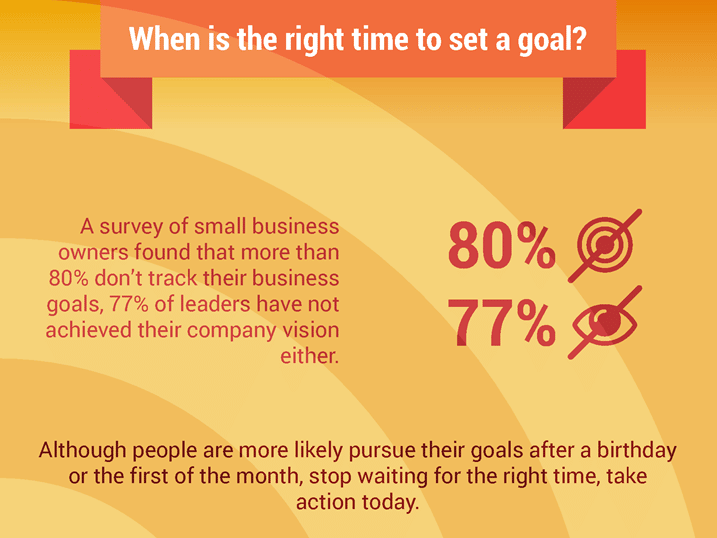
Putting goals in place will also help you stay focused, start with a baseline to benchmark your progress, and make you accountable. Here are some basic goals you can start with:
- Increase organic traffic by 1000% by end of Q3
- Generate 500 new blog subscribers by end of Q3
- Nurture new subscribers and gain 20 qualified leads by end of Q3
- Close 5 new sales by end of Q3
- Target revenue with these 5 new sales will be $25,000
2) Have a Deep Understanding of Analytics
It makes a lot of sense to say that you should leverage data and the insights you can glean from it to drive your blogging strategy. The challenge here is that it can be overwhelming to figure out where to start, what to use, and how to use it.
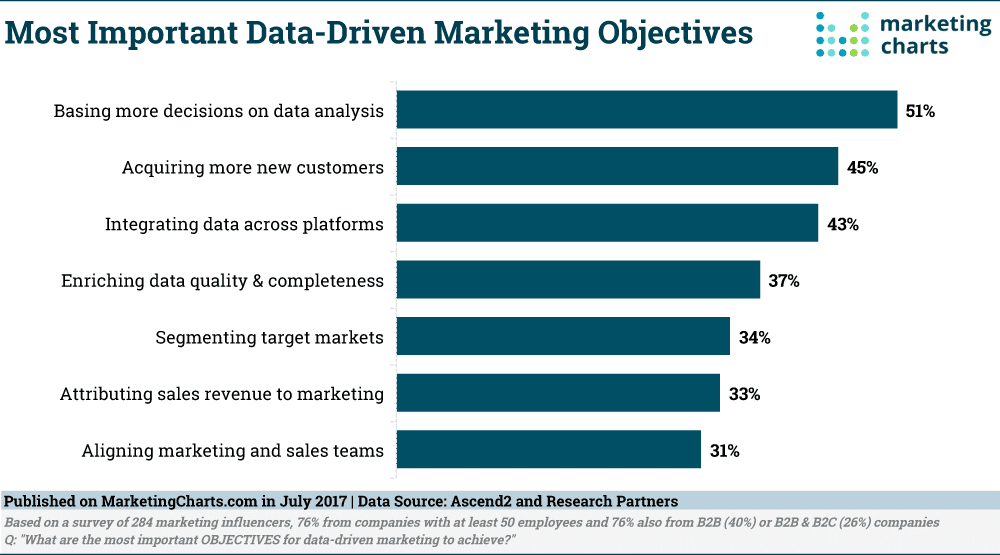
For starters, Google Analytics is a goldmine. It is filled with tons of data points that any company and blogger can use to better understand the following:
- Your audience, as in who is visiting your website and what they are looking for
- Top-performing pages on your blog and the time spent on those pages
- Top exit pages on your blog and the bounce rate
- Top referral traffic
- Top traffic source
- Location of your top visitors
- Goal completions
- Top search queries
Further, you can use Google Data Studio to visualize all the data you want more insight from. Visualizing your data is a great way to quickly and easily see trends as well as the behavior you want to better understand on your blog.
Here are some stats to know when it comes to the importance of analytics:
- 68% of businesses say that improving ROI measurability is the most important goal for a data management strategy.
- Understanding customer interactions across all touchpoints is the #1 challenge for companies.
- 57% of people are willing to share personal data in exchange for personalized offers or discounts.
- Nearly two-thirds (62%) of people say it’s acceptable for companies to send personalized offers and discounts based on items they’ve already purchased.
3) Outline and Plan Your Content
Blog posts don’t have to concern just thought leadership or what’s trending in your industry at the current moment. You can blog about upcoming events you might be attending or hosting, promotions you’re running, and even behind-the-scenes moments to show how your products/services are delivered.
Outlining your content ideas is a great place to start because it doesn’t hinder you from being creative. Here are a few things I like to think about this:
- Commonly asked questions you get from customers and prospects
- What competitors are consistently writing about
- Longer-form “how-to’s” that have been covered but can be rewritten in your own voice
- Questions being asked on Quora that you can turn into a blog post
You can outline your ideas in a mind map, for example, to get everything out before you begin planning:
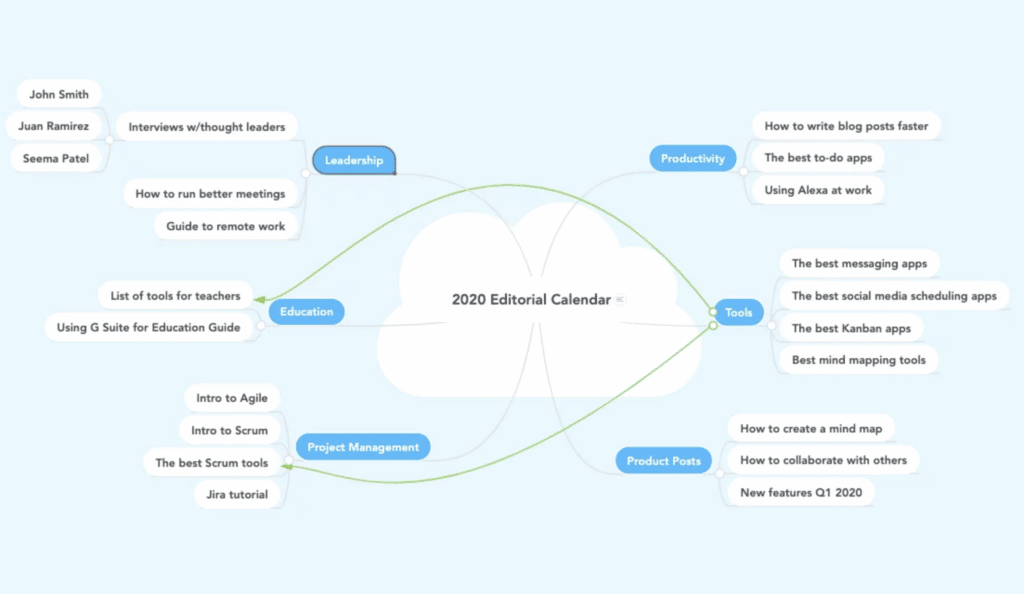
From there, you can dive in deeper and look at specific blog posts you can write depending on the lifecycle stage of your customers as shown here:
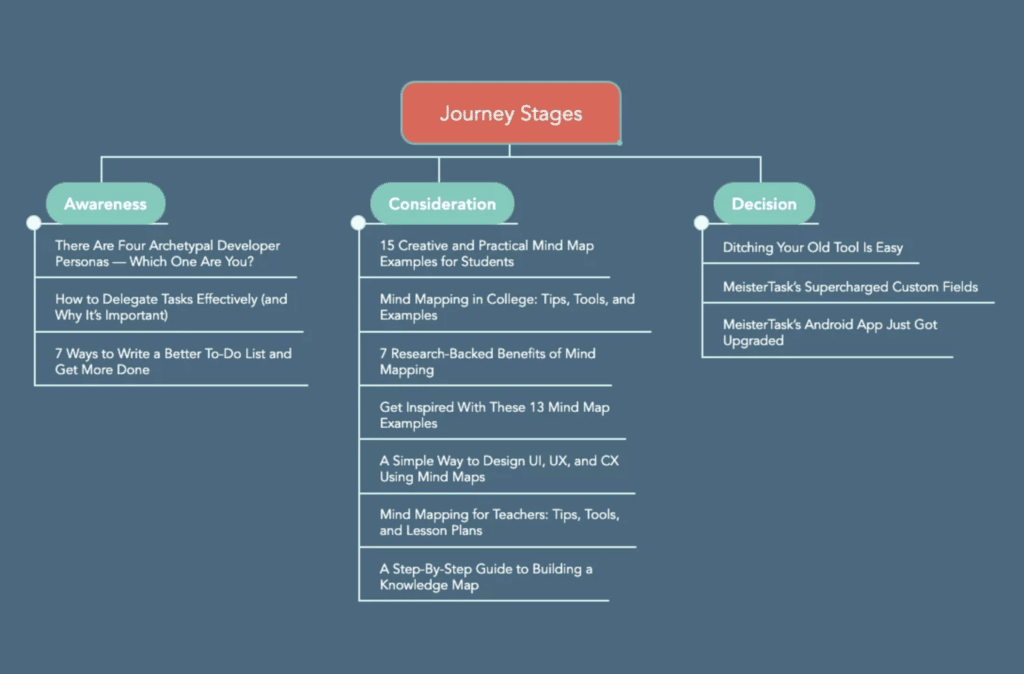
Once this is completed, move on to identifying the content you will be writing, understanding the audience’s search volume and intent, and how the content best serves your customer base.
What you should keep top of mind is how the topics you decide to write on will help you achieve your goals. Otherwise, you’ll only be wasting your time and working toward something that’s not aligned with your overall business objectives.
4) Combine Content Pieces and Repurpose
Over time, you’ll gather enough analytical data on the blog posts that perform best. You’ll find that some are similar, while others may be completely different.
For the ones that are similar, look at how you can combine them into an eBook. For the ones that are one-offs, look at how you can repurpose them into infographics.
I recommend these two paths because it helps with the following:
- You don’t have to keep writing new content; rather, you’re reviving the ones that are most popular and consumable.
- You can expand the lifecycle of your content pieces.
- You can further measure the performance of each content piece once repurposed and revived. This will help you best understand why people care about particular content topics and what you can do to further amplify your reach to grow your subscriber list and sales around those topics.
5) Insert CTAs (Calls-to-Action) Into Your Blog Posts
Once someone lands on your blog post and begins reading, the best thing you can do is to ensure that you’re inserting CTAs throughout. Here’s an example:
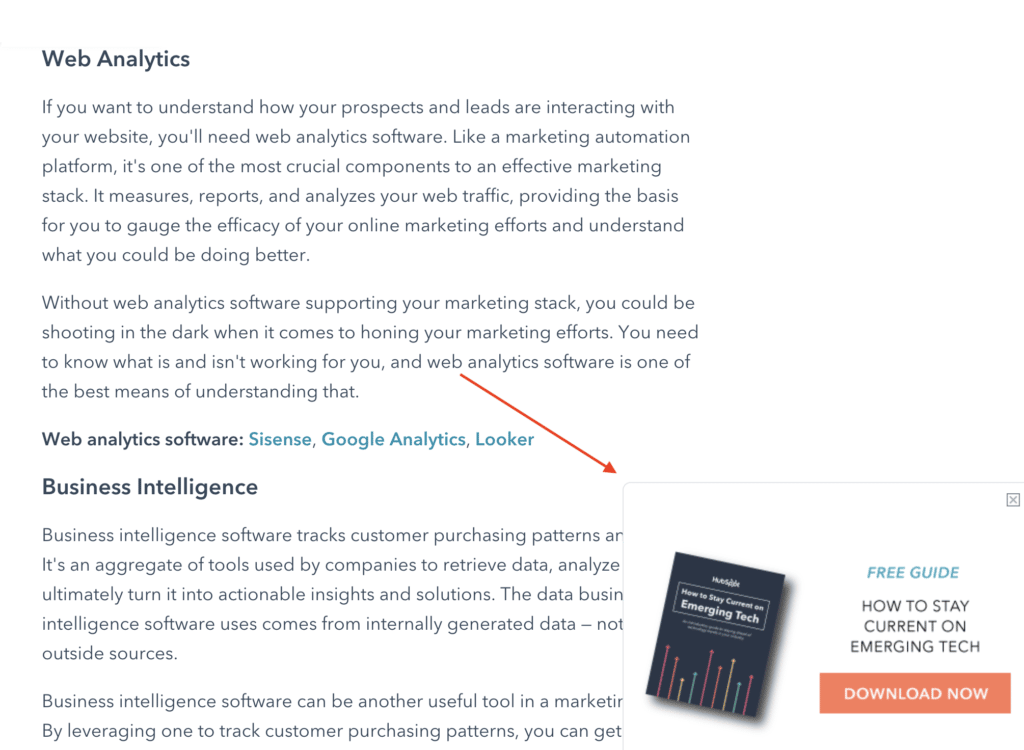
In this particular blog post, once you’re on it, a CTA flies in encouraging visitors to download a guide related to the blog post itself. As you get to the bottom of the blog post, visitors then see this CTA:

This CTA is promoting the same guide, but the goal here is to drive traffic to that guide. In doing so, you’ll be able to measure how many visitors to this blog post actually download the guide. Once the guide is downloaded, you can begin to nurture those specific leads and ultimately see how they fit into the sales funnel.
Wrapping It Up
What could make or break a blogging strategy all comes down to the actual planning, attaching it to your goals (which align with business objectives), understanding the analytics around each content piece, and then pushing people to take action.
Blogging will take time. At the beginning, you’ll see that the growth in organic and even direct traffic is slow, but as you continue to publish blog posts consistently, you’ll see an uptick and eventually collect enough data points to best understand how you can pivot or make improvements.






One Response